#Yard Drainage
Explore tagged Tumblr posts
Text

Proper yard drainage is crucial to prevent water buildup and erosion issues. Solutions for yard drainage in Atlanta offers tailored solutions to ensure your outdoor spaces remain functional and protected. From installing drainage systems to erosion control measures, these services can safeguard your landscape and foundation.
0 notes
Text
Four Ways To Get Rid of Standing Water
To prevent yard damage and health risks, consider installing a French drain, aerating your lawn, regrading the yard, and making sure gutters direct water away. For more information, keep reading about ways to get rid of standing water.

0 notes
Text
Understanding Common Yard Drainage Issues and Solutions
Drainage in the garden may be boring, but it is essential for maintaining a good and working outdoor area. If drainage is properly maintained, water can collect, the ground can wash away, and your house might get damaged, too.
In this detailed guide, we will look at the usual problems with water in the garden, why they happen, and some handy ways for landscape drainage repair to ensure your garden stays dry and your land is protected.
Yard Drainage Solutions You Can Do Yourself
Here are some backyard drainage solutions that you can implement on your own:
Grading: Shaping the land helps to make water flow correctly. By creating a yard slope away from your house, you stop water from gathering close to the base of your home. For grading, you require a transit level, a superficial line level, and some stakes to indicate the slope.
Downspout Extensions: Extensions for downspouts are simple and not costly for moving water far from your house’s foundation. You can buy flexible ones that connect straight to your current downspouts or choose below-ground drain pipes if you want them hidden.
Rain Gardens: Rain gardens work well and look good. You can create them with plants that soak up water, like local kinds of grass and flowers that bloom year after year.
Read more: Improve Your Property’s Drainage with These Tips
Common Causes of Drainage Problems
These are some of the usual reasons behind issues related to drainage systems:
Poor Soil Composition: The soil is essential for water drainage. Soils with a lot of clay don’t let water pass through easily, so the water stays on top. But soils that are sub-surfaced let the water go through too fast.
Improper Grading: When the ground is not sloped correctly, it often leads to problems with water drainage near building bases. If the land tilts towards your house rather than moving away from it.
Clogged Gutters: Over time, leaves, small branches, and junk can collect inside the gutter and stop the water from moving. That causes the drain to clog, damaging the surrounding area due to water leakage.
Originally published at: https://www.landtechscenery.com/the-importance-of-proper-yard-drainage-systems
0 notes
Text
The Importance of Water Conservation for Your Plumbing System
The Importance of Water Conservation for Your Plumbing System
Mr. Rooter of Northwest Florida provides all of your septic and plumbing needs with reliable and fast service. There are no overtime charges; it's upfront pricing, 24/7 service, and experienced technicians.
Mr. Rooter Plumbing of NW Florida 920 N E Ave Panama City, FL 32401 (850) 250-0906 https://www.mrrooter.com/northwest-florida
#24 Hour Drain Cleaning#Downspout Drainage#Plumbing and Drain Service#Tankless Water Heater Installation#Yard Drainage#Panama City#Florida
0 notes
Text
Ani Reviews: A Step-by-Step Guide to a Florida Native Yard
I promised you guys a review and here it is. I've never really done a book review before but I'm doing my best to make this Coherent and Helpful.

[Photo ID: a book, titled A Step-by-Step Guide to a Florida Native Yard by Ginny Stibolt and Marjorie Shropshire.]
Out of all the books I checked out from the library this round, I started with this one because it was the shortest out of all of them--if we don't count the appendix and index, its 101 pages long. You can read where I sort of live blogged a portion of this read here.
I think its a pretty good read! It's definitely a lot more relevant if you are the home owner and most directly in charge of landscaping decisions and such. It gives a bit of advice on how to handle making similar changes in an HOA neighborhood, and provides pointers and resources to other books that can also be helpful in the journey to make your landscape a wildlife-friendly habitat. It focuses on Florida specifically, as denoted by the title, and will frequently remind the reader that gardening in Florida is vastly different from gardening anywhere else. So whether you've been a Florida resident all your life, or are planning on making a move on down here, this book can be a helpful resource if you want to transform some or even all of your yard into a habitat.
After the introduction, the book is separated into seven major sections referred to as Steps. There's Assess Your Property, Plan for Drainage and Stormwater Sequestration, Install Trees, Plant Shrubs, Working with Herbaceous Plants, Build a Wild or Natural Area, and Create Spaces for Human Use. If you're more interested in one part than the others, you can definitely skip around to find what you're looking for. I will say, the Drainage and Stormwater section made my head spin a bit.
I will say this: I don't know if the writers ever fully decided if they wanted this book to be targeted towards those who are already gung-ho about native plants and itching to transform their landscape, or to people who are just beginning to dip their toe into the idea. Overall though, it was a nice and informative read, and the illustrations inside are lovely.
#ani reviews#ani rambles#out of queue#honestly like this book was a nice source of inspo that would inspire a transformed yard FOR ME#however if someone isn't already interested in native gardening I don't think its gonna push them into it#if all the talk about complicated drainage systems doesn't scare them off then honestly like#the alternative solutions they offer for lawns aren't... detailed on much#i would really love to find a book that focused on alternative lawn groundcovers for Florida specifically that targeted the concerns#i find that most people have#like 'can this hold up to kids playing soccer? to dog activities? if I roll my trashcan over it to get it to the curb is it gonna die on me#because like this book recommends dune sunflower as an altenrative to turf grass but even in the appendix section it doesn't mention if it#can handle being stepped on at all#it does say frogfruit is a good turf grass substitute but also like#frogfruit sunshine mimosa and twinflower are the other 3 it suggests forth and theyre ALL butterfly hostplants#and while the possibility of there being bugs in a turf lawn is far from an impossibility idk the idea of stepping on caterpillars icks me#*out. like even if ur not barefoot#and i know my mom and one of my other friends' first concerns would be 'would snakes hide in it' and idk if thats like#a Fringe Concern that most people don't worry about but I've never seen anyone address it when talking about alternative lawns#i am getting off topic#im ending the tags here byebye
5 notes
·
View notes
Text
January 2024: The Second Week
Oven dried tomatoes made using this recipe. These are some of our Juliet tomatoes that we harvested right before the first freeze of 2023:

My queen was called up for jury duty this week but wasn't selected so she won't be called for at least another year. She got 11 dollars for the one day... parking near the court house cost 18. She'd still do it again:

A week's worth of seen while walking:
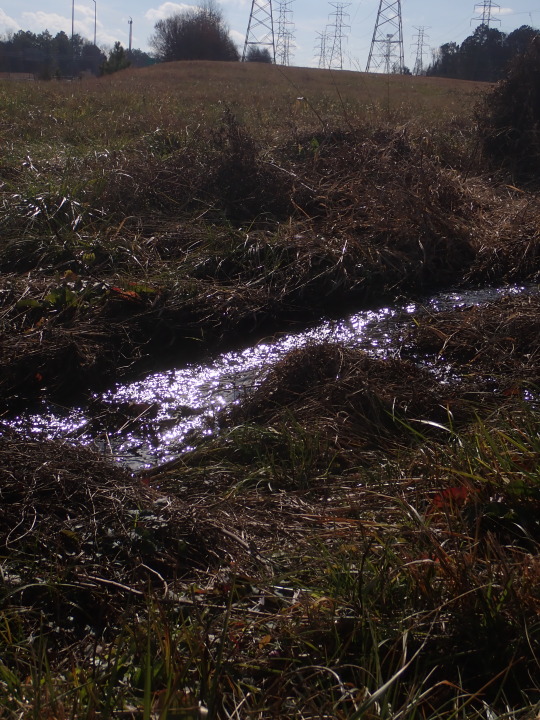
The best photo I could manage of a pileated woodpecker:
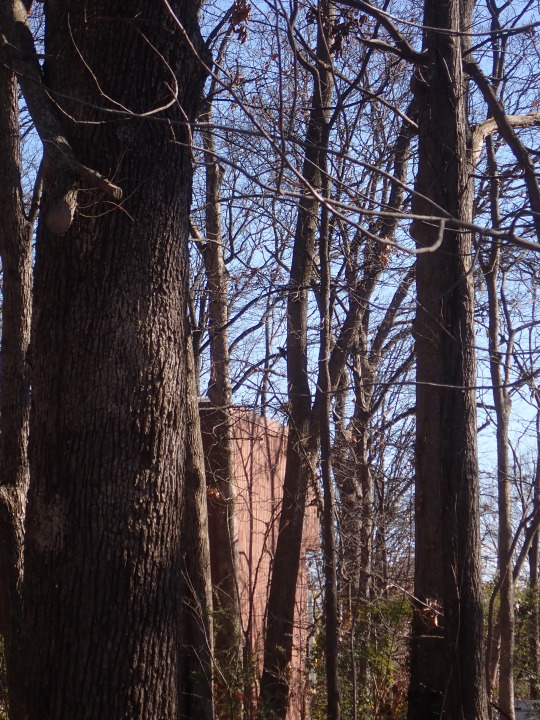
All decked out for Mardi Gras:

Gray squirrel street preaching:

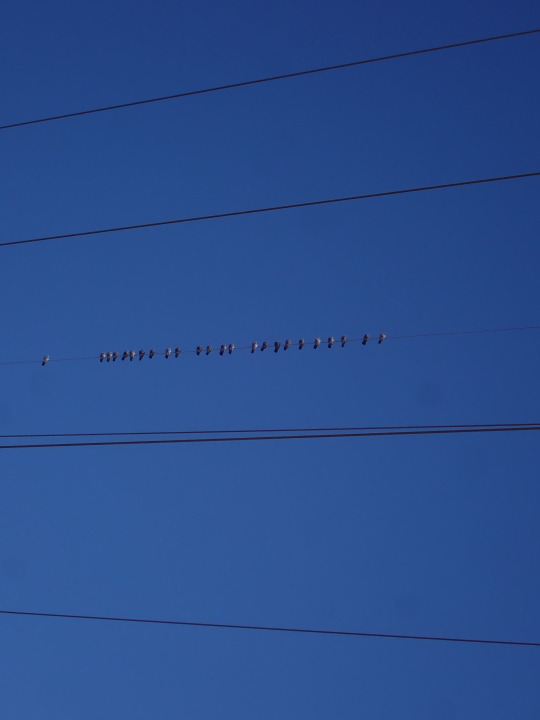
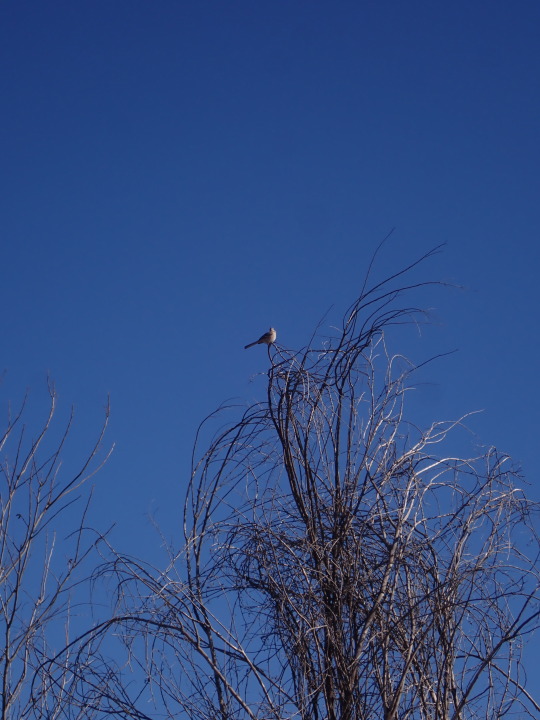
#homegrown tomatoes#juliet tomatoes#oven dried tomatoes#jury duty#seen while walking#drainage ditch#trees#woodpecker#pileated woodpecker#yard art#concrete deer#deer statue#mardi gras#deer#squirrel#gray squirrel#blue sky#power lines#birds#pigeons#mockingbird#northern mockingbird#life in memphis
2 notes
·
View notes
Text
drainage ditches
#always wondered why some houses have these in their front yards and literally just realized its probably bc they dont have street gutters#anyway it must be a pain to try to mow in there. a lot of them are filled with leaves rn too like yeah thats really gonna help drainage#but people never clean out their street gutters either so i guess its just human nature
0 notes
Text
Why Commercial Lawn Maintenance Matters for Your Business Success
As a business owner, you have many responsibilities. One of them is maintaining the appearance of your commercial property. Your lawn is an essential part of your business's curb appeal and can significantly impact the impression you make on potential customers. This post will discuss why commercial lawn maintenance is crucial for your business's success.
#Retaining Walls#Boulder Retaining Wall#Rock Retaining Wall#Block Retaining Wall#Lawn Care#Lawn Maintenance#Bi Weekly Lawn Care#Yard Mowing#Leaf Cleanup#Shubbery Trimming#Commercial Lawn Maintenance#Commercial lawn care#Landscape Construction#Softscaping#Drainage Installation#Walkways#Stone Patios#Water Features#Sitting Walls#Boulder Retaining Wall Installation
1 note
·
View note
Text
Excavating Contractor

For over a decade, D R Excavation has been the Columbus-area contractor of choice for excavation and grading needs both big and small. From commercial construction firms to residential homeowners, we provide vital site preparation services to get properties construction-ready or solve ongoing land stability issues. We pride ourselves on our expertise across a comprehensive range of excavation capabilities as well as our relationship-focused business values. Your project satisfaction is our number one priority.
Whether preparing raw sites for the construction process, installing new drainage systems, clearing brush and trees or transporting heavy materials, we have advanced equipment and a highly knowledgeable team ready to take on all types of projects. Core services we offer include but are not limited to: Drainage System Installation (catch basins, French drains, trench drains, storm sewer lines and more) Land Grading (cut and fill earth relocation, sloping, stabilizing and more) Driveway Construction (gravel, decorative stone, crushed concrete, chip-seal) Parking Lot Grading Land Clearing and Brush Removal Erosion Control Retaining Wall and Berm Building Pond and Water Feature Excavation Trenching for Utilities (water, electric, etc) Hydro-seeding and Sod Prep As a proud Columbus business, we prioritize supporting other area companies as subcontractors and go above-and-beyond for homeowners needing small repairs or renovations as well. Senior, military and first responder discounts are just another small way we give back to the community that's supported us over the last 10+ years. Ready to get your next excavation or site prep project estimate? Our pricing is always fair and transparent. Give D R Excavation a call today – we can’t wait to hear how we can help with your unique property needs!
Phone: (380) 207-1754
Business email: [email protected]
Website: https://www.excavationdoneright.com/excavation-contractors-reynoldsburg-oh
#excavation companies columbus oh#excavating contractors columbus oh#yard grading columbus oh#drainage contractors columbus oh#gravel driveways columbus oh#land clearing#hydroseeding#final grade#brush hogging
1 note
·
View note
Text

Effective yard drainage is key to protecting your property from water damage and erosion. Discover how specialized yard drainage solutions in Roswell help manage water flow and maintain a healthy landscape. Learn how their services can prevent damage and keep your yard in top condition. Visit their website to find out more.
0 notes
Text
How to Choose the Right Drainage System for Your Landscape
When selecting a drainage system for your landscape, assess your property's unique characteristics, such as water accumulation areas, soil type, and existing drainage features. For more information, refer to choose the right drainage system for your landscape.

0 notes
Text
The Importance of Yard Drainage

Effective yard drainage is essential to prevent standing water and leaks, safeguarding both your home and landscape. Poor drainage can lead to water accumulation, causing significant property damage and an unattractive, unhealthy yard. Excess water can erode soil, weaken plant roots, and infiltrate your home’s foundation, leading to costly structural issues and basement flooding.
Why Proper Drainage Matters
Adequate drainage protects your home and yard by preventing foundation cracks, basement leaks, mold, and mildew growth. Healthy drainage also ensures vibrant lawns and gardens by eliminating waterlogged soil and erosion. Investing in proper drainage systems can extend the lifespan of your property.
6 DIY Drainage Solutions for Your Yard
When faced with yard drainage issues, tackling them yourself can be both cost-effective and rewarding. Effective drainage not only enhances your outdoor space but also protects your property from expensive damage. Whether you need to redirect water, stabilize your yard, or implement other solutions, here are six simple DIY drainage methods to keep your yard dry and healthy:
Install a Curtain Drain: A curtain drain is a subsurface system designed to capture and redirect groundwater away from your yard and home. Identify areas where water collects, then dig a shallow trench around the site. Line the trench with landscape fabric, place a perforated pipe inside, and cover it with gravel, finishing with soil. This method prevents water accumulation, protects foundations, and maintains a dry landscape.
Set Up a Catch Basin: A catch basin effectively collects and redirects surface water away from your yard. Position it in low-lying areas where water tends to gather. Dig a hole for the basin, ensuring it sits level with the ground, and connect it to a drainage pipe that directs water to a safe outlet, such as a storm drain or dry well.
Replace Hardscaping with Drainage Materials: Traditional hardscaping features like patios and driveways can hinder drainage. Consider replacing these with permeable materials that promote infiltration and reduce runoff. Options include permeable pavers, gravel, or porous concrete. Additionally, slight slopes in pathways can help channel water away from your home.
Utilize a Rain Barrel: A rain barrel captures rainwater from your roof, minimizing runoff and enhancing drainage. Position it near a downspout, ensuring it’s elevated for proper flow. Use a diverter to direct water into the barrel and cover it with a screen to keep out debris and insects. You can then use this collected water for gardening or other outdoor activities, preventing overflow around your home.
Create a Dry Creek Bed: A dry creek bed can naturally direct excess water away from your yard while adding visual appeal. Plan the water’s path, dig a shallow trench, and line it with landscape fabric to deter weeds. Fill the trench with a mixture of rocks and gravel, interspersed with decorative stones for a natural appearance.
Regrade Your Property: Regrading adjusts the slope of your yard to encourage water drainage away from your home. Identify low spots where water collects after rain, then use a shovel or regrading equipment to create a slight slope away from your foundation. A gradient of six inches over ten feet is effective for proper water movement. Proper regrading prevents water damage and erosion, ensuring a healthy yard and enhancing curb appeal.
Originally published at https://www.landtechscenery.com/drainage-solutions-to-protect-your-home-and-yard
0 notes
Photo

Landscape - Traditional Landscape An example of a mid-sized traditional drought-tolerant and partial sun hillside gravel retaining wall landscape in summer.
#retaining walls#california native plants#drainage#gardening#landscape architects and landscape designers#landscape#front yard
0 notes
Text
Privacy - Traditional Pool

Picture of a spacious, elegant backyard with a uniquely shaped privacy pool
0 notes
Photo

Sacramento Traditional Landscape Ideas for a traditional mid-sized hillside gravel retaining wall landscape in the summer that is tolerant of drought and receives some sunlight.
#landscape architects and landscape designers#landscape contractors#retaining walls#drainage#front yard#california native plants
0 notes
Text
Knowing when to call yard drainage professionals
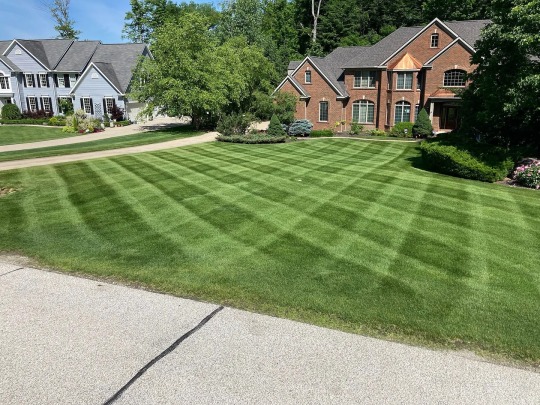
Having a beautiful yard is a source of pride for many homeowners, but it can quickly become a headache if you're dealing with water drainage issues. Poor yard drainage in Chagrin Falls can lead to a host of problems, including soil erosion, waterlogged plants, and even structural damage to your home's foundation. While some minor drainage problems can be addressed with DIY solutions, there are times when it's essential to call in the experts. This article will explore when it's time to reach out to yard drainage professionals for help.
Signs you should contact yard drainage professionals
1. Persistent standing water
If you notice areas in your yard where water consistently pools and doesn't drain away, it's a clear sign that you have a drainage problem. These puddles not only make your yard unusable but can also create ideal breeding grounds for mosquitoes and other pests.
2. Soil erosion
Erosion is a silent threat that can undermine the integrity of your landscape. If you see soil washing away during rainstorms or notice exposed roots and the formation of gullies, it's time to consider professional help.
3. Soggy lawn or plant health issues
A consistently wet lawn can harm your grass and other plants. If your lawn remains soggy, and you're seeing signs of stress in your vegetation, like yellowing or wilting, it's a clear indication of poor drainage.
4. Water entering your home
Water should never enter your basement or crawl space. If you notice signs of water intrusion, such as dampness, mold growth, or even visible water, it's crucial to address the issue promptly before it causes significant damage to your home's foundation.
5. Gurgling drains or slow drainage
Inside your home, gurgling sounds or slow drainage in sinks, toilets, or showers could be indicative of blocked or damaged drainage pipes in your yard. This might require professional inspection and repair.
6. DIY solutions haven't worked
If you've attempted DIY drainage fixes, such as adding more soil or installing French drains, and the problems persist or worsen, it's a strong signal that you need professional expertise.
7. New construction or landscaping plans
If you're planning significant changes to your landscape, like adding a patio, or driveway, or expanding your home, consulting with a yard drainage professional during the planning stages can help prevent future drainage issues.
8. Flooding from nearby sources
If your yard is prone to flooding due to factors beyond your control, such as heavy rain runoff from neighboring properties or municipal drainage issues, a professional can assess your situation and suggest appropriate solutions.
9. Water quality concerns
If your yard drainage issues involve contaminated water, like sewage or chemical runoff, it's crucial to bring in professionals to address the environmental and health risks associated with such problems.
10. Preventative maintenance
Even if you haven't encountered severe drainage issues yet, it's wise to consider professional consultation for preventative measures. Experts can evaluate your yard's topography and recommend proactive solutions to avoid future problems.
In conclusion, recognizing when to call yard drainage professionals is essential for the health and aesthetics of your property. Neglecting drainage issues can lead to costly repairs and extensive damage. If you're experiencing any of the signs mentioned above, or if you're planning significant landscaping changes, don't hesitate to seek the expertise of a yard drainage professional. They can assess your specific situation, recommend appropriate solutions, and ultimately help you enjoy a dry, beautiful, and problem-free outdoor space.

TW Landscape
Address : 71 Locust Lane, Chagrin Falls, Ohio, 44022, United States
Phone : (216) 202-2259
Website : https://www.twlandscapeoh.com/
Follow Us On Social Media
TW Landscape On Facebook Page
TW Landscape On Instagram
TW Landscape On YouTube Video
#chagrin falls landscaper#chagrin falls landscaping#chagrin falls ohio lawn care#chagrin falls lawn services#chagrin falls yard drainage
1 note
·
View note